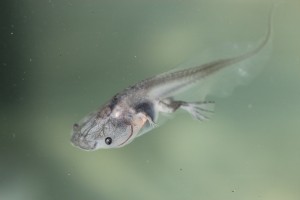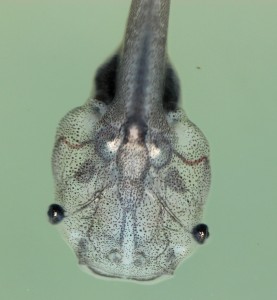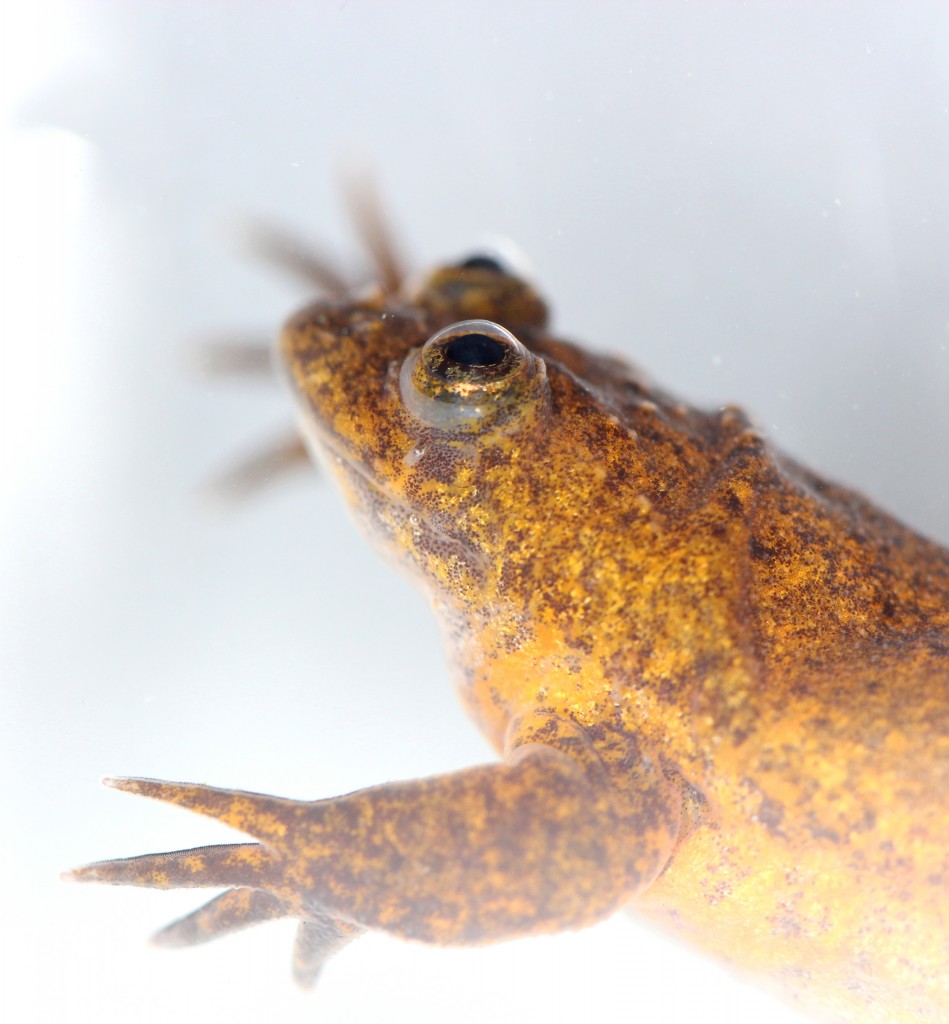
In spring 2014, a very important tadpole hatched from a frog egg at ZSL London Zoo. It was shortly followed by many brothers and sisters, and these 3mm long ‘swimming commas’ were the first live tadpoles of Xenopus longipes, the Lake Oku clawed frog, to be seen by human eyes. These tadpoles, the product of the first ever captive reproduction of the species, were the result of years of dedicated work replicating in detail the water chemistry, pH and temperature of a small volcanic crater lake in the forests of Cameroon – Lake Oku. Revered as sacred by local communities, this is the only place on the planet where Lake Oku clawed frogs can be found. A 30-40mm swimming stomach, with forward pointing arms ready to cram prey into an ever-hungry mouth, this frog is one of only two vertebrates known to be dodecaploid (carrying 12 copies of each chromosome instead of the usual 2). Ranked as the number 35 global priority for amphibian conservation on the basis of threat and evolutionary history, the Lake Oku clawed frog is a fascinating frog indeed.
Unfortunately, having lots of extra DNA is not enough to safeguard the future of this frog in the wild. The forests around Lake Oku are under pressure from development, the lake itself is suffering from pollution and the threat of the introduction of predatory food-fish species looms as local communities struggle to find compromise between the sanctity of the lake and the need to support themselves economically. More worrying still, the amphibian killing fungus Batrachochytrium dendrobatidis (Bd or ‘chytrid’), which has driven declines and extinctions of amphibians around the world, has been detected in the lake and the clawed frog has undergone a series of mass mortality events, the cause of which is still undetermined. However, so little is known about the frog’s biology, ecology and behaviour that it is difficult to understand how the frog may react to changes in its ecosystem and so to determine the best way to conserve the frog.
The highly specific conditions required to encourage the adults to breed and to successfully rear the tadpoles speaks to the unusual and stable water chemistry of Lake Oku and suggests that the pollution of the lake may have important impacts on larval survival and breeding success. The long development of the tadpoles, particularly in comparison to the 30 days taken by some other Xenopus species, is also important in understanding the population biology of the species in the wild. As we watched our frogs breeding, males clutching females in a mating embrace or ‘amplexus’, the eggs hatching, and tadpoles growing and eventually turning into frogs we were able to document important details of the life of Lake Oku clawed frogs. The eggs are laid singly, stuck carelessly on any surface in the aquarium – the parents become even less caring as they immediately begin to consume their own spawn. The tadpoles are bizarre-looking, transparent filter feeders – the hear blood vessels, gills, brain and gut are all visible through the body wall. They take more than six months to transform into frogs and metamorphosis is dramatic, even in frog terms. The widely spaced eyes of the tadpoles migrate to the top of the head, the mouth and internal organs change shape, lungs form, gills diminish and the wide-finned tail is absorbed after legs grow.
That first tadpole is now a 15mm replica of its parents and its siblings are not far behind, some at that awkward phase with both legs and tail and all the complications in locomotion that brings. This breeding success is the first step in using the Living Collection at ZSL London Zoo to understand the Lake Oku clawed frog and to provide the information needed to launch successful conservation efforts in the wild.

